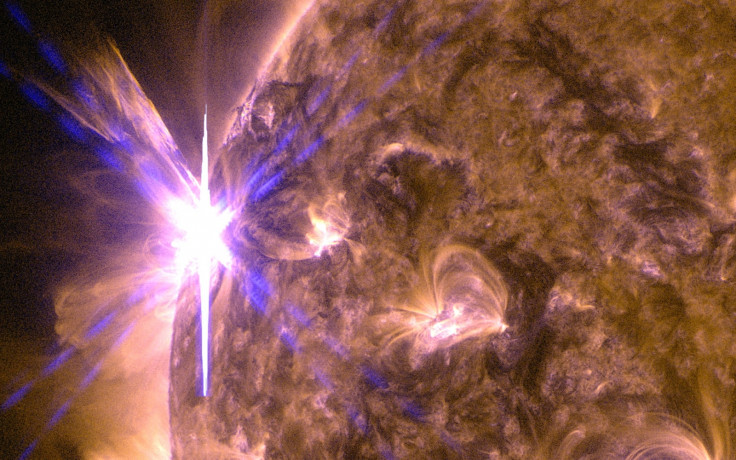Solar superflares bombarding Earth 4 billion years ago provided conditions right for life
Solar superflares with the energy of a quadrillion atomic bombs struck Earth on a daily basis four billion years ago – events that may have helped provide the conditions necessary for life to develop, researchers have said.
Life on Earth is believed to have started 3.8 million years ago. At this time, the Sun was only about 70% as bright as it is today. This poses a problem for scientists, as it should mean Earth was too cold for liquid water (and potentially life) – known as the Faint young Sun paradox.
In a study published in Nature Geoscience, researchers from Nasa used telescope observations of solar storms coming from other young Sun-like stars to estimate the solar storms produced by the Sun. Findings showed they would have been 10 times more powerful than what is produced by the Sun today.
Furthermore, they said these superflares could have struck Earth frequently, possibly every day. The energy from these solar storms would have been equivalent to a quadrillion atomic bombs.
Simulations indicate the superflares would have distorted Earth's magnetic field, resulting in large gaps around the poles that allowed energetic particles to enter the atmosphere. Models of the atmospheric chemistry then showed how the interactions triggered changes that allowed nitrogen to generate compounds useful for life, including nitrous oxide and hydrogen cyanide.

In a domino effect, this would have then provided the building blocks for life, as well as the warm climate that allowed for liquid water. "The stellar energy fluxes are high enough to ignite reactive chemistry that produces complex molecules crucial for life," they wrote.
"As a byproduct, this chemistry forms greenhouse gases that can efficiently keep the atmosphere warm enough for liquid water to exist ... Our concept implies that the activity of the early Sun provided a window of opportunity for prebiotic life on Earth."
In a related News & Views article, Ramses Ramirez, from the Carl Sagan Institute at Cornell University, said that while some questions remain – including what would have happened when solar activity weakened – "the processes proposed by Airapetian et al. may be critical to the early Earth environment".
He said the study has implications for planetary evolution, as well as the search for life elsewhere in the universe. "The findings may have implications for the climates and potential biology of terrestrial exoplanets orbiting very young Sun-like stars, particularly stars with exceptionally high magnetic fluxes and very intense super stellar storms," he wrote.
© Copyright IBTimes 2025. All rights reserved.






















